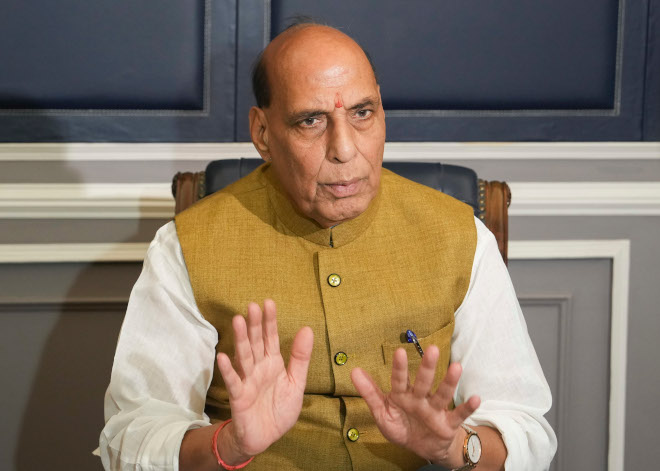
Admiral RK Dhowan, Chief of the Naval Staff unveiling the new OPV's plaque along with Vice Admiral Satish Soni, FOC-in-C, East and the ship's Commanding officer Commander MM Mokashi at Chennai on Sept. 4. An Indian Navy photo
CHENNAI (PTI): Strongly pitching for indigenisation of warships and submarines, Chief of Naval Staff Admiral R K Dhowan has said the future of Indian Navy is firmly anchored on indigenisation and the force has transformed from "Buyers Navy" to "Builder's Navy" after relentless efforts.
After commissioning the Navy's largest indigenously built offshore patrol vessel (OPV) INS Sumitra at the Chennai Port Trust, he said: "The blueprint of the future of Indian Navy is firmly anchored on self-reliance and indigenisation. We currently have 41 ships and submarines under construction in different private and public shipyards within the country."
"It is a matter of great pride that with relentless efforts we have transformed from a Buyers Navy to a Builder's Navy."
It should now be the Navy's endeavour to constantly increase the percentage of indigenous content so that future warships for Indian Navy will truly be 100 per cent made in the country, the naval Chief said.
Noting that a major threat in the maritime domain was in the form of asymmetric warfare and maritime terrorism, he said, "In recent years, the responsibility of Indian Navy in safeguarding maritime frontiers and carrying out tasks related to coastal security has increased manifold".
"India has a vast maritime line and the responsibility of protecting them falls on the shoulders of men in white uniform", he added.
INS Sumitra is the fourth OPV in its class and built on in-house design of Goa Shipyard Limited (GSL).
The vessel, fitted with sophisticated weapons and equipment, can help meet Navy's needs for undertaking ocean surveillance and surface warfare operations to prevent infiltration and transgression of maritime sovereignty and is suitable for monitoring sea lanes of communication, defence of offshore oil units and other critical offshore national assets.
Later speaking to reporters, Dhowan said one of the reasons for commissioning such a large patrol vessel in Chennai was due to the long coastline and movement of cargo.
"We have a long coastline which is 7,615 km and India's economic zone is of 2.02 million square km and therefore the Indian Navy has responsibility to ensure seaward frontiers and coastal security are looked into", he said.
Responding to a query on the international threats faced by Navy, he said, "The challenges which have emerged in the maritime domain are very wide and vary. 90 per cent of India's trade travel over sea and 33 per cent of world's cargo traffic flow out from Indian Ocean to other countries in the world".
"Particularly on the island territories of Andaman and Nicobar and Malacca Straits, 60,000 ships pass through these waters every year. Therefore, the importance of Bay of Bengal and Eastern part of Indian Ocean region is increasing every day", he said.
 Previous Article
Previous Article Next Article
Next Article













The Indian Air Force, in its flight trials evaluation report submitted before the Defence Ministry l..
view articleAn insight into the Medium Multi-Role Combat Aircraft competition...
view articleSky enthusiasts can now spot the International Space Station (ISS) commanded by Indian-American astr..
view article